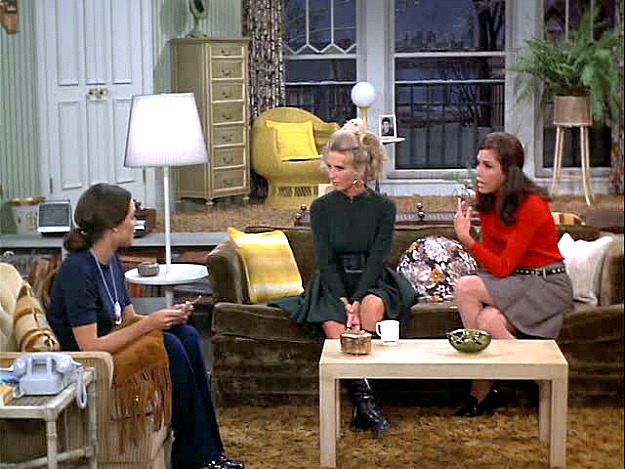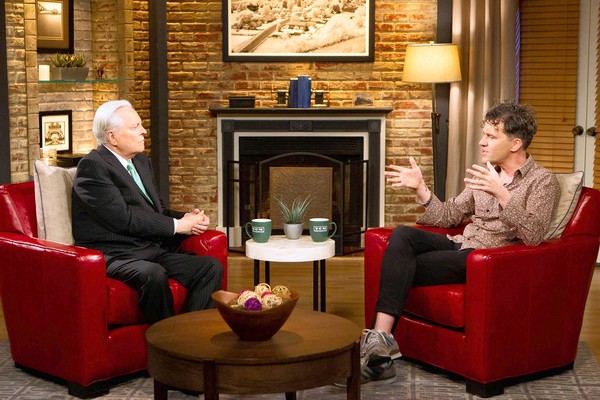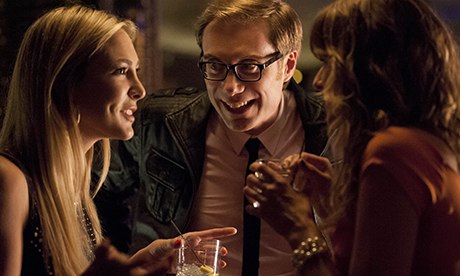My favorite TV show of all time may just be
The Mary Tyler Moore Show, so I was thrilled when Jennfer Keishin Armstrong's book
Mary And Lou And Rhoda And Ted came out. It is by far the most comprehensive look at the series.
The general outline I already understood, but Armstrong goes into detail about the development and production of the show. Mary Tyler Moore had become a big name by the time
The Dick Van Dyke Show, in which she co-starred, left the air in the mid-60s. But her work after that in movies and on stage seemed to be going nowhere. When Van Dyke did a TV special with Moore in the late 60s it got her a lot of attention and CBS was willing to commit to a series. She and husband Grant Tinker, a TV executive, formed MTM Productions and decided to hire hot, young TV writers James L. Brooks and Allan Burns to create the show. This was a bit of a risk, but they were looking for something new, and Brooks and Burns delivered. The Van Dyke show itself had been the top in TV sophistication, but this new show was to go further, introducing Moore as a divorcee trying to create a new life in Minneapolis. It would be funny, to be sure, but realistic. Mary wouldn't get stuck in farcical situations like Lucille Ball (not that there's anything wrong with farce)--her show would be about the challenges faced by a young, single woman in the 1970s.
The network hated it. Especially the divorce. (They worried people would think she divorced Dick Van Dyke.) If Moore and Tinker didn't believe in the talent they'd chosen, Brooks and Burns probably would have been kicked off the project. But they stuck by them, figuring the best strategy is hire talent and let them do their thing. (Tinker didn't tinker.) Still, to appease the network, Brooks and Burns had Mary leaving a long relationship rather than be divorced. The rewrite also gave them time to change Mary's job--previously Mary had been an assistant to a gossip columnist, now she'd be an assistant producer at a local news show.

The story behind the casting is fascinating. The men hired for the sitcom--Ed Asner, Gavin MacLeod and Ted Knight--had been kicking around for years, and while they'd had some success, this would be their big break. Knight himself was about ready to quit the business, and the show saved him. MacLeod came in to read for the part of Lou Grant, Mary's crusty boss, but he preferred Murray, Mary's friend. (Actually, Murray was originally seen as Mary's nemesis, but MacLeod was so nice they didn't play it that way. For that matter, Ted Baxter, the arrogant anchor, was originally seen as a potential love interest, but after they hired Knight, older and more buffoonish, they went in a different direction.) Asner's first read for Lou Grant was a disaster--he seemed too angry. On the way out, he asked for another chance, and that second reading got him the role. As opposed to these veterans, Valerie Harper, who played Mary's best friend Rhoda, was a dancer with little acting experience, but somehow took to the part as no one else they saw--she was so convincing that to this day many people think she's Jewish. Then there was Cloris Leachman, who came in, sat on James L. Brooks' lap, and got the part of kooky Phyllis.

Meanwhile, other classic parts of the show were being developed. For instance, there's the multi-level look of Mary's one-room apartment (with a cookie jar the props department always kept filled, even though Moore was diabetic and Harper was trying to lose weight). Sonny Curtis read a description of the show's format and somehow composed the perfect theme song, "Love Is All Around"--and then insisted he, rather than a name, be allowed to sing it. He did have to change the words after the first season, since it originally started "How will you make it on your own?" By the second season everyone figured she'd made it, so it changed to "Who can turn the world on with her smile?" We also find out how they shot the title sequence, where Mary throws her hat in the air, on a very cold day in Minneapolis.

The first run-through in front of an audience was a disaster. There were technical problems, which didn't help, but by and large the crowd didn't like these characters, and the actors didn't rise to the occasion. Moore was devastated--her big comeback was going up in smoke. Tinker called Burns and Brooks and told them to fix it. The two didn't panic (though they did worry a lot). They made a few minor changes--especially having Phyllis's daughter Bess say she liked Rhoda so the audience would understand this abrasive character was actually okay--but mostly they worked on getting the acting and technical side up to where they should be. (One actor, who played Mary's former boyfriend, complained about the script. After the pilot started going more smoothly, he wondered if he might become a recurring character, but was never asked back.) Their patience was rewarded, and on the big night where they taped the pilot, the audience responded. They liked Mary, they liked the situation, and they especially liked Ed Asner telling Mary "You've got spunk...I hate spunk!"
Even then, CBS wasn't thrilled and scheduled the pilot in a death slot where no one would watch. (Luckily, the deal Moore had required the network to air it or it may never have seen the light of day.) But then new management took over, axed all the "country" shows on CBS like The Beverly Hillbillies and Hee Haw, and hoped to develop a better demographic with hipper shows. MTM was put on Saturday, then a good night for TV. The critics at first weren't impressed--and the network was still giving notes suggesting things like Mary should date a prince--but as the weeks went on the audience realized this was a smart, funny, classy show. During reruns more and more people caught on (and another new show on the same night, All In The Family, caught on even more). By the second season MTM was in the top ten.

Through the years, the show lost some characters to their own series--Valerie Harper as Rhoda was the first to go, and soon after Cloris Leachman as Phyllis got a show. But MTM barely stumbled as they were replaced by popular new characters: Betty White as Sue Ann Nivens the Happy Homemaker (her character was originally described in the script as a "Betty White" type) and Georgia Engel as Georgette. Engel was especially helpful in humanizing Ted Baxter. Ted Knight was worried he was becoming known as TV's biggest dolt, and this relationship--including a marriage and child with Georgette--deepened his character.
Armstrong also spends a lot of time discussing the women who wrote for the show. In an era when female sitcom writers were scarce, MTM featured many, including Treva Silverman and Susan Silver. Part of it was common sense--Brooks and Burns wanted to tell real stories, and their show centered on what would happen to a woman of the time. Unfortunately, Armstrong gives short shrift to the men (aside from Burns and Brooks)--great writers like David Lloyd, Ed. Weinberger and Bob Ellison are passed over quickly, if mentioned at all.

The show left TV after seven classic seasons, beloved and highly honored. It would regularly appear at or near the top of all-time lists, and "Chuckles Bites The Dust" was recognized as perhaps the greatest sitcom episode ever. (Armstrong clears up the legend that regular director Jay Sandrich didn't want to shoot a show about death--he claims he was given a week off every now and then and decided to miss this episode so he could work the previous week with Eileen Heckart who played recurring character Aunt Flo.)
I don't think any of the actors ever topped their work on this show--but then few could have. Moore starred in a few more shows, none of which were hits. Ed Asner as Lou Grant got his own show, a drama that lasted five years, which was respected but never as honored as MTM. Gavin MacLeod starred in Love Boat and Ted Knight in Too Close For Comfort, successes, but not in the same class.
Burns would work in movies and TV, but it was partner Brooks who had the most impressive record. He'd go on to create classic sitcoms Taxi and The Simpsons and also succeed in movies, writing and directing titles such as Terms Of Endearment and Broadcast News.
The people who worked on the show knew it was something special. The final season got harder and harder as they realized it was all coming to an end. The penultimate episode had Mary and Lou finally go out on a date and discover they weren't meant to be together physically. (Brooks actually thought this was a cop-out, but Moore insisted). The last show--where everyone in the newsroom is fired except for the incompetent Ted--has become a classic.
The series was taped in Studio City, in the Valley. I've visited the site. There's a small plaque that says "On this stage a company of loving and talented friends produced a television classic." Armstrong's book does a good job documenting that fact.





























